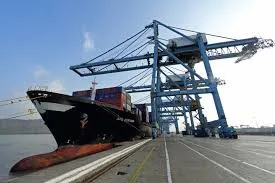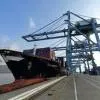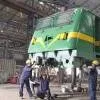The results of a prolonged lockdown owing to the COVID-19 pandemic are becoming more palpable with every passing day. As the economy begins to open gradually, businesses and industries are now facing a shortage of labour, supply chain disruptions and an overall subdued demand for both consumer and industrial goods. The construction industry is no exception to this experience.
Harsh Pareek, Regional Sales Director, India and SAARC, Trimble Solutions, shares more on the impact of COVID and how the company is helping customers in these difficult times.
How has the lockdown impacted business?
While the construction activities have resumed, the conventional ways of on-site activities and workflows are difficult to execute with developers and contractors trying to juggle business-related responsibilities on one hand, and measures to safeguard their workers on the other. In fact, the construction industry is likely to be slow to bounce back to pre-lockdown levels precisely because it is manifestly dependent on the presence of a large volume of workforce onsite for any physical work to happen. A Crisil Research analysis indicates a 12-16 per cent contraction in construction investments for the industry this fiscal; from Rs 8.6 trillion in fiscal 2020 to Rs 7.3 trillion in 2021.
How are you planning to help your customers get back to normal?
As the leading technology providers for the construction industry, we remain committed to stand by our customers in these difficult times. Our customers include architects and designers, structural engineers, fabricators, contractors and project owners; and our goal is to help them restart their work with greater agility as lockdown is lifting and normal operations are resuming. We are providing them with full support in running their tech-enabled workflows.
Speaking specifically for how we plan to help clients during the lockdown, we have taken a series of measures to help the individual companies accelerate the digitalisation of their workflows in these testing times. For example, Trimble has widened the scope and availability of the free trial of its structural BIM collaboration tool – Tekla Model Sharing. It is now available globally, including India, and can be used free for 90 days, even for business purposes.
Additionally, all Tekla licenses can be now accessed remotely, free e-learning has been introduced across our portfolio, free trials are now available for various products, flexible licences all the way down to a few weeks of subscription have been offered, and our sales and services teams are available round the clock for any kind of assistance that will help customers work productively at home locations.
How ready you think the Indian construction industry is to implement ‘social distancing’ at the jobsite?
It is no doubt an uphill task for the construction industry to implement the requisite social distancing norms, without sacrificing productivity.
Construction is one of the most labour-intensive industries and ensuring the appropriate social distancing between a set of on-site workers will necessitate lesser number of workers on site and slowing down of work; which would quite likely lead to delays in completion of projects.
The pandemic is here to stay, and, in our view, the construction industry needs to aggressively look for ways to retain their pre-lockdown productivity, or perhaps even increase, even while following social distancing norms. We believe that a thorough digitalisation of construction industry workflows and the deployment of cutting-edge technologies like constructible BIM, prefabrication (precast construction) mixed reality, IoT, AI and robotics can be powerful enabler of rapid gains in productivity, so much so as to offset and overcome the inevitable losses on account of social distancing norms.
As the first step, constructible BIM and prefabricated structures are easy to adopt processes and technologies that can optimise construction in today’s challenging times. Constructible BIM’s adoption can greatly reduce wastage of the time, money and resources through smarter and more collaborative workflows. Furthermore, considering the social distancing to be the new normal, software like CrewSight enables the client to manage worksite by approving entry on-site of the labour with prior mandatory health checks and making sure certifications are in place, as well track where the workers are at any point in time and maintain social distancing, and if anything should happen, alert response team to react to the situation immediately.
What are the new opportunities and technologies you see emerging and playing a role in the industry’s comeback?
The imminent economic recession in the wake of COVID-19 pandemic forebodes a tough near-term outlook for the sector and while the industry gears up to bounce back, it must also recognise and seize this opportunity to accelerate its digital transformation for insulating itself from future shocks.
What the industry owners really need is to adopt a holistic view of the full construction life-cycle or ‘continuum’ to address this matter. The construction continuum for buildings is spread over the five key stages of planning, designing, engineering, construction, and finally occupancy and maintenance, and each stage of the life-cycle is rapidly being transformed by technology the world over through a holistic approach and engagement, often driven by the owners themselves.
Visualising the construction process as a continuum or placing a building (structure) along the various stages of a continuum is a powerful way for construction companies to analyse the business value of various technologies ateach stage. Using the same scale as a reference, they can readily see the advantages digitalisation brings to actual construction or operations.

Various technologies, construction processes and methods such as Constructible BIM, prefabricated structures, mixed reality, Cloud computing and Internet of Things (IoT), among others, can drive a massive change in how we design, build and operate projects.
As disruptive technologies, they not only have the potential to create new benchmarks of value for all stakeholders in the construction ecosystem, but also shape new competitive advantages in the post-COVID world.



















